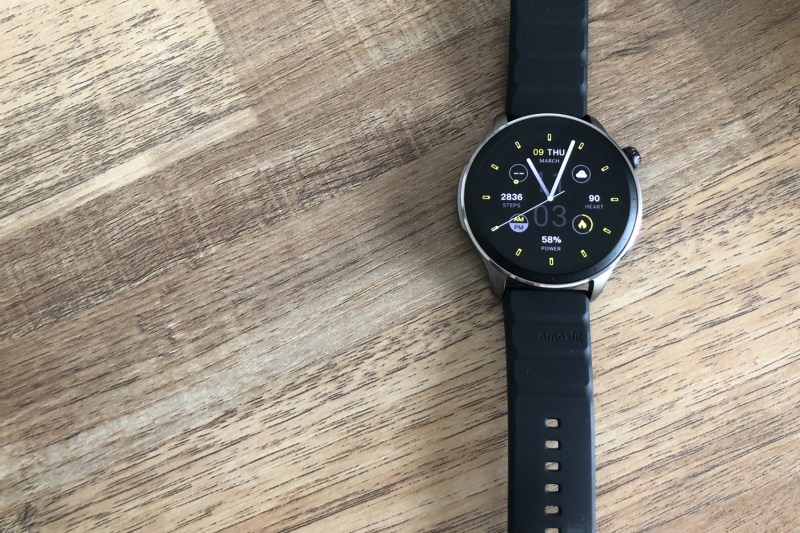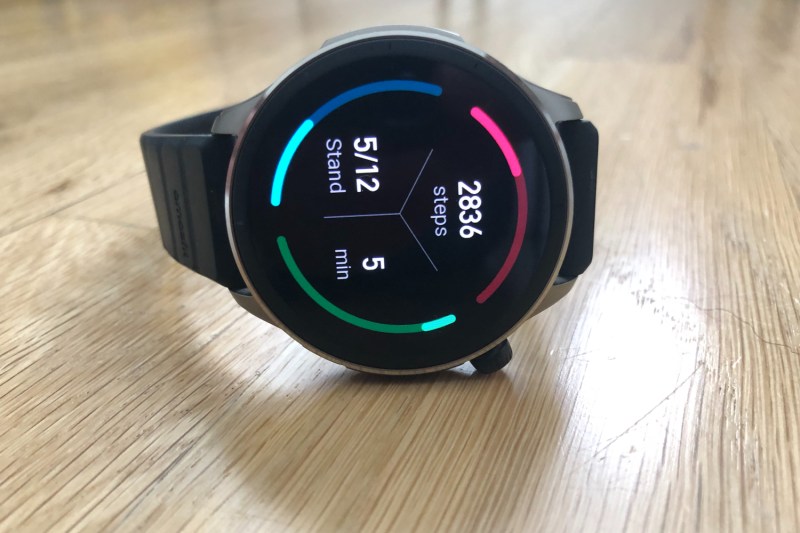Like red wine types and binge-worthy Netlix shows, there are a lot of smartwatches out there. Some are tailored to fitness, others more for their communication features and app integration. The latest from Amazon, the Amazfit GTR 4, is a hybrid that’s a bit of both worlds.
Coming in at $200, it’s by far one of the least expensive options on the market. For the price, it does a lot — sometimes to a fault. However, if you’re after a watch that’s a solid bet as a workout partner and easy-to-use timepiece, this model is for you. Falling fairly nicely somewhere between a fitness tracker and a sophisticated smartwatch, it’s a good bet.

There’s a lot to unpack with the latest model, from a slew of sensors to enough fitness functions to make your head spin. Overall, though, it’s a stellar watch at its price point, and it even outclasses some of its significantly more expensive brethren.
There’s a lot of hype brewing around the Amazfit GTR 4. After testing it for a couple of weeks, we learned a lot about the watch. Here’s our Amazfit GTR 4 review.
The pros

The pros very much outweigh the cons with this device. It’s a durable watch with tremendous battery life. It charges rapidly with a slick little magnetic charger. The display is bright and vibrant, and the wear is very comfortable. There’s been chatter about the cheapness of the band, but we didn’t seem to notice. Besides, if you want to use it for an active lifestyle, do you need the fancy band?. The watch even does exceptionally well under water, with a setting that expels excess water buildup and a reminder to rinse with freshwater if you happen to be playing in saltwater.
Where the GTR 4 really shines is in its many sensors, which all seem to be accurate and useful, making it a very reliable smart fitness watch. It comes with an accelerometer, geomagnetic capabilities, gyroscope, heart monitor, and an ambient light sensor that reacts well to its surroundings. They combine to create a nice portrait of your body and how it’s faring during jogs, swims, weight-lifting sessions, bike rides, and more. The step counter is always in the foreground (for better or worse, depending how into that you are), and an easy swipe left gets you to a rough portrait of your daily activities and BPM.
The use of multiband GPS is pretty high-end and not found in too many other models. It allows for very accurate tracking, ideal for long jogging routes (the health benefits of running are real), and hikes. Other pros include attractive watch face options that offer several classic looks with faux manual hands. The light and motion sensors are incredibly responsive, keeping the screen black unless truly activated. The sleep feature is interesting, if nothing else, taking into account your motionless-ness, heart rate, and more.
As runners, we really liked some of the workout features that allow for interval training and keep tabs on your heart rate and caloric burn as you go. The reminders buzz too, which is nice if you’re really digging deep on a run and paying more attention to your stride and surroundings than the device. Being able to catalogue individual runs and compare and contrast them is a bonus.
We also like the PAI (personalized activity intelligence) approach. It’s more of a cumulative philosophy, meaning it awards points based on seven days of activity, with a score of about 100 as the target. It’s a nice way to stretch things out and encourage long-term exercise as opposed to little binges of heavy fitness. In other words, it promotes more of a fitness routine, which is better for you overall than small, unpredictable bursts of exercise.
The cons

The app is likely the biggest flaw here. Being simple is fine, but the app doesn’t really keep up with the sophistication of the watch itself. Moreover, there’s very little in the way of app support. It’s all a bit Alexa-dependent, but that’s to be expected from an Amazon product.
We encountered a few hiccups while running in the rain. The screen seems a little confused at times by excess water droplets and differentiating between your fingers and the weather. It’s more of an occasional inconvenience than anything, but it’s one worth noting.
We did not do much in the way of voice commands and phone connectivity, but the speakers are neatly tucked away, and the audible breakdown of your workout is a nice touch, if a bit fuzzy.
While fitness is first and foremost the best use for this watch, the extent of the
The consensus

There are plenty of reasons to like this watch. While the app isn’t great and the extra fitness bells and whistles are a bit much, it’s a solid watch that looks, feels, and functions great. For active people after a stylish
If you’re in the mood for more product testing, check out our Dryrobe review.


